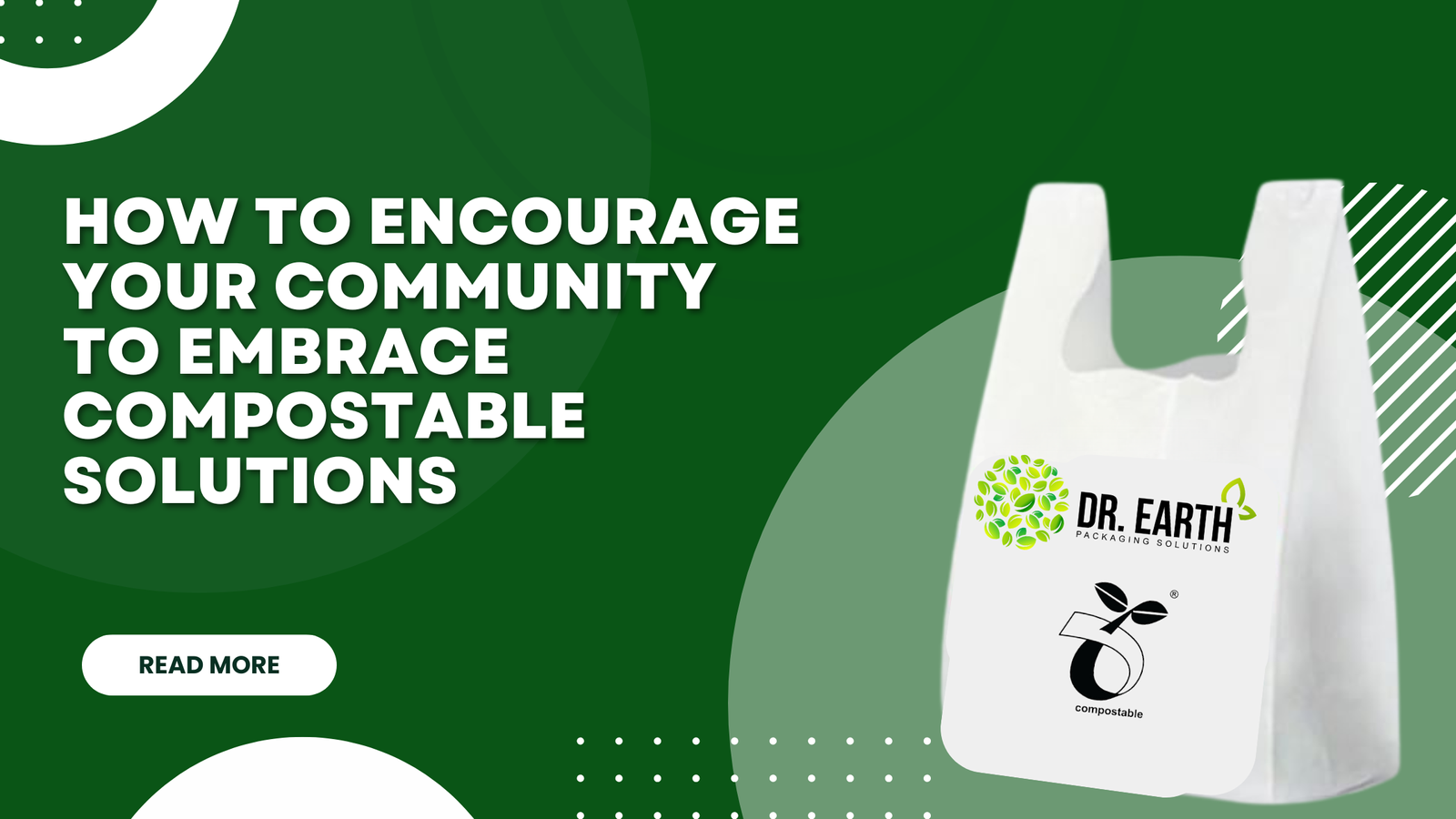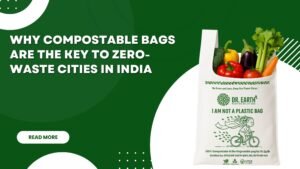
The world, however, is fighting for sustainability amidst the environmental crisis; in such a scenario, sustainability becomes not a choice but a necessity. Thus, one of the strongest actions against waste and our dear Earth is embracing compostable solutions. Compostable products are developed specifically to break down into the ground without leaving behind toxic residues. They’re fantastic alternatives to traditional plastics as well as other non-biodegradable materials.
Turning your community towards compostable solutions can change the environment and well-being of your locality forever. This blog focuses on how to practically motivate your community, educate it, and drive the community towards a better future.
1. Start with Awareness Campaigns
Basic building blocks of initiation of change: building awareness. There must be so many in your community who do not know what compostable solutions are and why they are needed. Initiating an awareness movement would bring in knowledge that could make them rethink their consumption habits.
How to Get Started:
- Eco-Talks: Organize seminars, webinars, or community events featuring environmental experts who can explain why there’s a need for compostable products.
- Distribute Educational Materials: Distribute pamphlets, hoardings, and digital material in favor of the use of compostable products.
- Harness the Power of Social Media: Place the best available infographics, videos, or articles about compostable options tagged with region-specific hashtags on social media.
Key Message to Share:
- Of course, products of compostability do not accumulate in landfills.
- Harmful chemicals that may leak into soil and water are absent from it.
- Compostable is a circular economy since nutrients return to earth.
2. Promote Local Access to Compostable Products
Accessibility is key to making your community adopt compostable solutions. Unless such products are easily available, then the chances of people making the transition are low.
Steps to Take:
- Work with Local Businesses: The grocery stores, restaurants, and retail shops should be worked with so that the compostable bags, utensils, and packaging are readily available.
- Community Resource Guide Put together a list of vendors and websites similar to Dr. Earth where residents can obtain compostable products.
- Organize Bulk Purchasing Groups: Assist the people to gather and buy compostable materials in bulk to minimize everyone’s cost.
Examples of Compostable Products to Promote:
- Eco-friendly shopping, carry, and food packaging bags and covers.
- Tableware and cutleries made from fully compostable material for use in any outdoor functions.
- Biodegradable garden waste carrier bags and compostable liners
3. Set Up Community Composting Programs
Composting and compostable products are good together because they provide your community an opportunity to watch themselves and see how those products fit into their lifestyle of being environmentally friendly individuals through controlling the organic material.
How to Implement:
- Establish composting centers: Create sites in your community where community members can drop off organic waste and other compostable materials.
- Provide composting containers: Provide free or subsidized composting containers to the household or apartment complex.
- Training programs: Educate the community on how to compost, including what should be composted and what not.
Benefits of Community Composting:
- Creates nutrient-rich soil for gardening.
- Reduces waste sent to landfills.
- It encourages hands-on, tactile knowledge of sustainability.
4. Lead by Example with Plastic-Free Initiatives
Promote using the available sources on being reluctant to be plastic-free. Either host a meeting for the people of the community to make them realize how the compostable solutions will function.
Ideas for Plastic-Free Events:
- Neighborhood Clean-Up Drives: Provide volunteers with compostable bags to collect waste; important to remind everyone that green solutions are needed.
- Eco-Friendly Fairs: Host fairs, picnics, or holidays with only compostable plates, cups, and cutlery.
- DIY Compostable Workshops: Show the audience how to make their own compostable products, such as wax food wraps or reusable bags.
5. Collaborate with Schools and Youth Groups
Children and youth are most receptive to the ideas and, in many ways, can become very strong change agents. By involving schools and young groups, sustainability programs will continue to be transmitted to future generations.
Strategies for Engagement:
- Incorporate Composting Lessons: Work with schools to introduce topics such as composting and waste segregation in their science curriculum.
- Eco-Clubs for Children: Encourage the students to form eco-clubs that will initiate sustainability projects, like composting drives or plastic-free campaigns.
- Art and Essay Competitions: Organize competitions in which children create art or write essays on the need for compostable products.
6. Advocate for Compostable Policies
Government and local authority support can give your campaign a multiplier effect. Lobby for policies that encourage the use of compostable products and reduce dependence on single-use plastics.
Ways to Advocate:
- Petitions: Collect a petition to call for plastic bag elimination and provide compostable bags within your municipality.
- Town Hall Meetings: Take all the data and sample support to the related council meetings.
- Business Incentives: Invite the government to a meeting to propose exemptions for taxes for companies that are using compostable packaging and products.
Successful Examples
- To those cities that have banned plastic bags as well as having the lawful obligation to compost, San Francisco, for instance, the landfill waste has reduced greatly.
7. Organize Workshops on Compostable Products
Workshops are one of the hands-on ways to educate the community on compostable products. Participants learn how to successfully integrate the solutions into their lives.
Workshop Topics:
- Composting at Home Using Compostable Bags and Liners
- True Compostable Products Identification (those that are CPCB/CIPET certified)
- Artistic Applications for Compostable Items Such as Gardening or Making DIY Crafts
Outcome:
Workshops leave participants equipped with knowledge and skills that help them become easier to convert to sustainable practices.
8. Create Incentives for Participation
Provide incentives for people or organizations to embrace composting alternatives. Rewards will place them in a positive feedforward cycle of commitment and not quitting.
Examples of Incentives:
- Redeemable coupons by shop owners to local patrons using compostable bags.
- Recognize awards to particular houses or organizations that switch to sustainable ways of practice.
- Partner with brands such as Dr. Earth to make available free samples of products made from compostable material.
9. Build a Compostable Culture Through Storytelling
Humans are inspired by stories. Sharing success stories of any individual, family, or business in your community that may be using compostable solutions makes them excited and interested.
Ways to Share Stories:
- Highlight their stories in local newsletters, or social media pages.
- Keep a community blog or vlog of real-life instances.
- Host live events where people tell the audience their story of sustainability.
Message:
People buy these little eco-friendly actions must be illustrated in terms of the great benefits received – fewer wastes or less cost, for instance.
10. Collaborate with Eco-Friendly Brands
Brands such as Dr. Earth, being specialists in compostable products, can be a useful partner for your community. It can provide your community with reliable resources and products.
Collaborative Ideas:
- Product Demonstrations: Host events where brands will present the benefits of using their compostable products.
- Discounts and Promotions: Offer discounts on community-wide compostable products by partnering with brands.
- Educational Content: Work with brands to create content that meets the needs of your community.
Why Embracing Compostable Solutions Matters
By way of using compostable solutions, the community achieves lowering their carbon footprint and ensuring proper preservation of their resources while offering more doorways to a healthy future for them. It happens to be a simple yet achievable one-way step through which everyone comes to make an actual contribution regarding making their environment.
Conclusion: A Collective Effort
Encourage your community to adapt to compostable solutions, not only as a replacement of one product by another but as an attitude of sustainability and responsibility. Education, collaboration, and collective work may raise your community as exemplary environmental stewards.
Start small, dream big. Today’s action creates a legacy of sustainability for generations.
FAQs
Q- 1. What are compostable solutions?
Ans- Compostable solutions include products and practices that break down naturally into nutrient-rich soil, like bags, cutlery, and packaging.
Q- 2. How can I convince people to adopt compostable products?
Ans- Educate people, make it accessible, and give incentives. Make them aware of the environmental and economic benefits of compostable items.
Q- 3. Are compostable products affordable?
Ans- Some compostable products may be more expensive at the onset, but their long-term benefits outweigh the expense.
Q- 4. What role do brands like Dr. Earth play?
Ans- This is because it offers certified products that are known to be compostable, thus making it easy for communities to adopt its use.
Q- 5. How can schools contribute to this initiative?
Ans- By including it in their curricula and holding eco-friendly activities with the substitution of plastic by compostable material.
Share:
Related Posts














